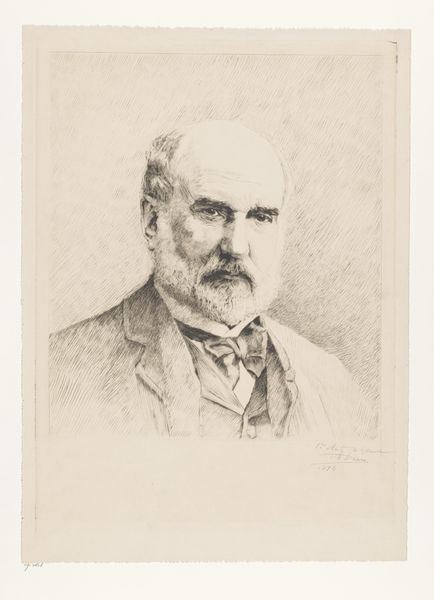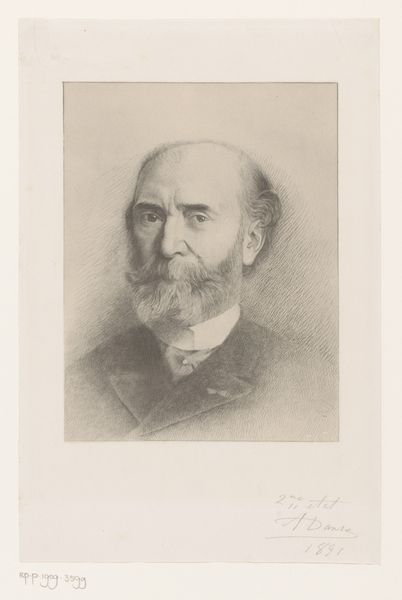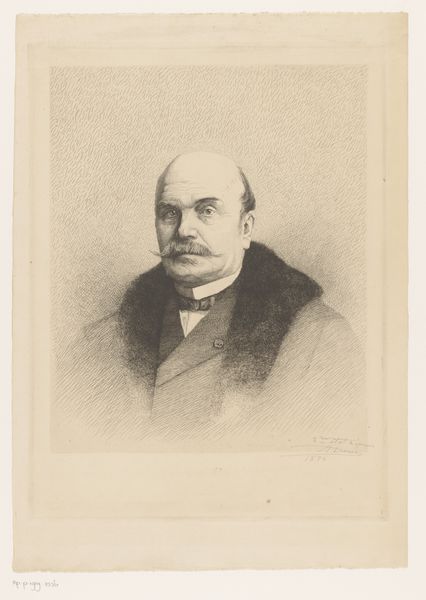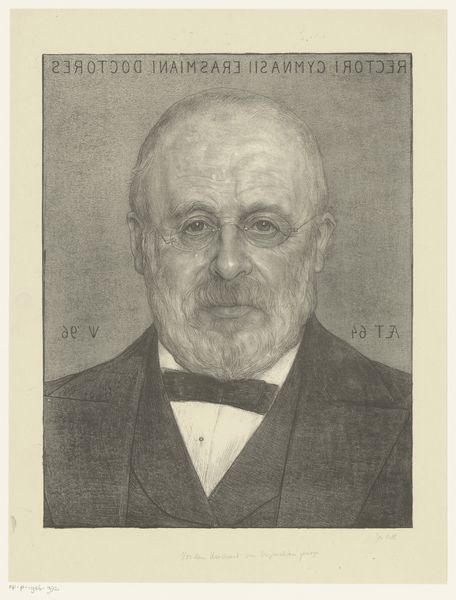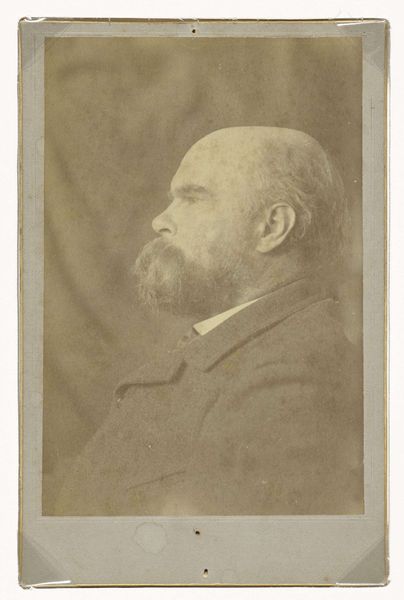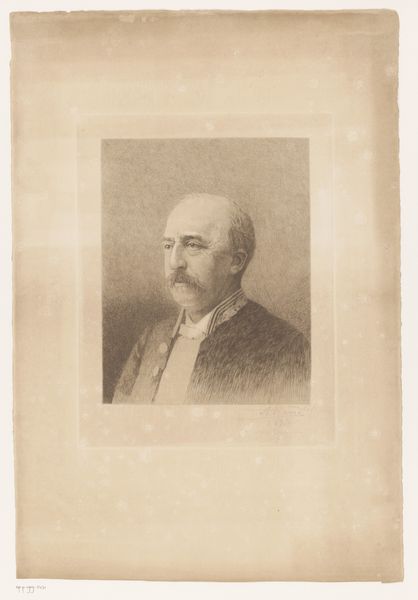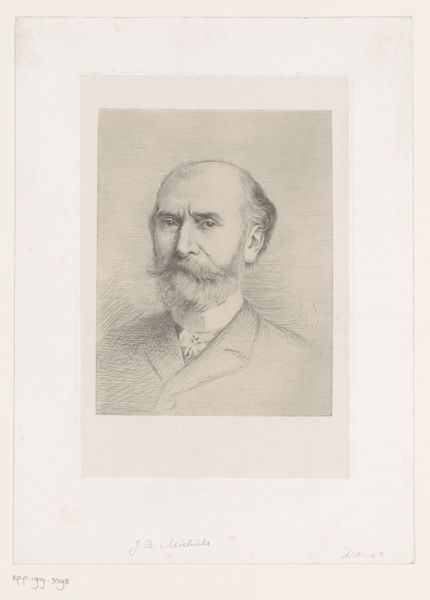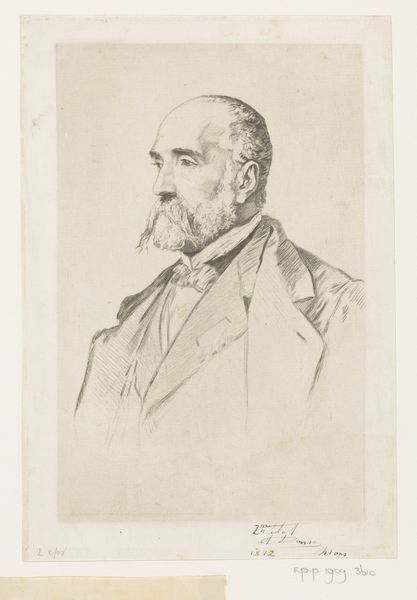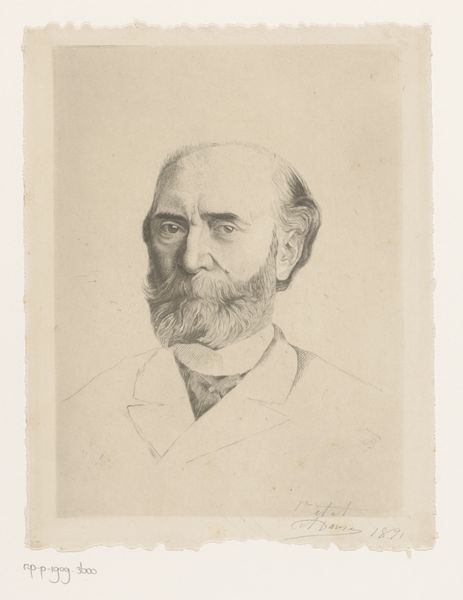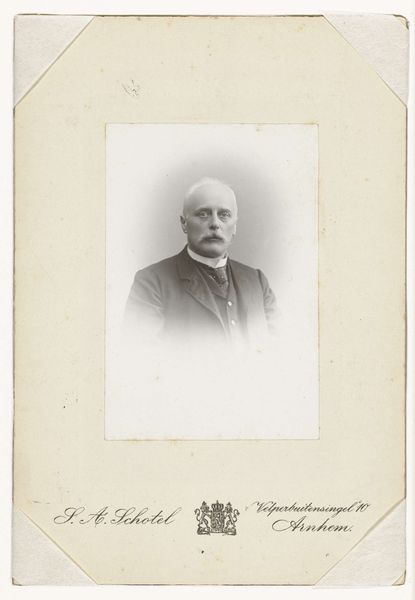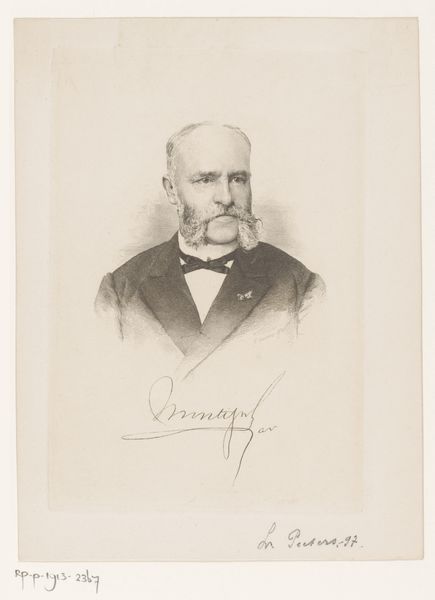
drawing, pencil, graphite
#
portrait
#
drawing
#
charcoal drawing
#
portrait reference
#
pencil drawing
#
pencil
#
graphite
#
portrait drawing
#
academic-art
#
realism
Dimensions: height 560 mm, width 395 mm
Copyright: Rijks Museum: Open Domain
Editor: We're looking at "Portrait of Eudore Pirmez," a drawing done in 1895 by Auguste Danse. It looks like it’s done in pencil or graphite. It feels very…stately, I suppose? What do you see in this work? Curator: What immediately strikes me is the stark contrast between the supposed refinement of portraiture – historically a commission reserved for the upper classes – and the materiality of its production here. Danse uses readily available, mass-produced graphite. The very 'stuff' of this art democratizes the image, regardless of the sitter's status. Notice how the pencil marks, the layering and blending, are clearly visible. How does that affect your perception of the image? Editor: I suppose it makes it seem less…precious? Knowing it's just pencil takes away some of the formality. The visible marks highlight the labor. Curator: Precisely! Consider the social context: the late 19th century, burgeoning industrialization, a growing middle class. Portraiture became less about documenting nobility and more about reflecting bourgeois values and aspirations. The choice of readily available materials subtly undermines traditional aristocratic notions. The act of drawing, typically preparatory, is presented as a finished product, emphasizing process over idealized representation. Editor: That’s interesting. I never really thought about the pencil itself having that kind of social meaning. I guess I was just focused on the person in the portrait! Curator: The materials are never neutral. This drawing encourages us to think about how artistic choices, down to the very graphite, can engage with, and even subtly challenge, prevailing social hierarchies. It really broadens my perception of the artwork, thinking not just about subject matter, but what and how it is created. Editor: It has definitely made me reconsider the work in its context of artistic production and how everyday resources can carry hidden implications.
Comments
No comments
Be the first to comment and join the conversation on the ultimate creative platform.
